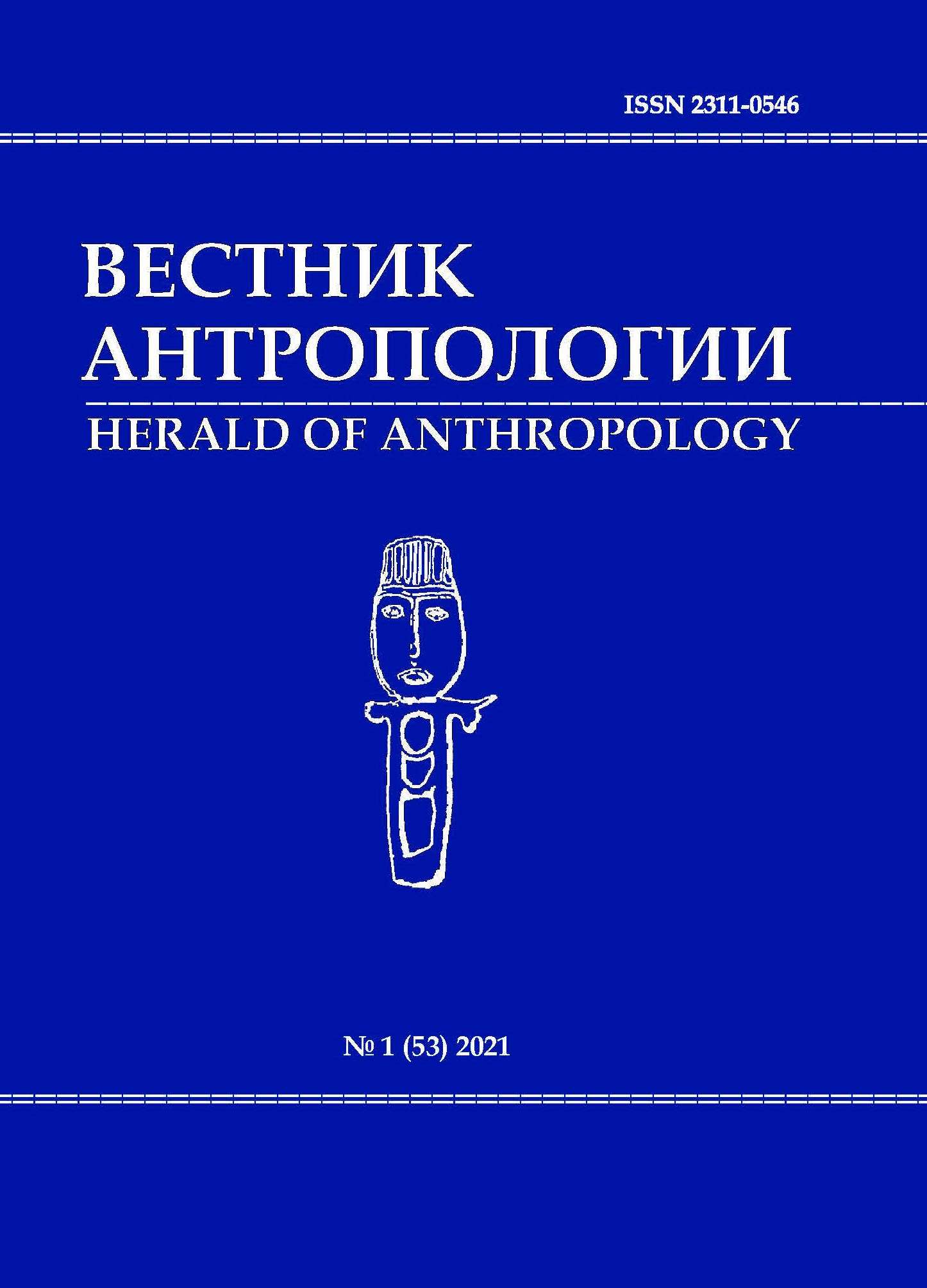Вода/река – макроэлемент культурной географии юкагиров
DOI: 10.33876/2311-0546/2021-53-1/288-303
Ключевые слова:
Якутия, северные номады, кормящая стихия, гомогенная территорияАннотация
Рассматривается один из основных ландшафтных кодов культурной географии – «вода/река», его анализ позволит понять особенности формирования хозяйственной специфики и духовных ценностей бродячих охотничье-рыболовных племен Восточной Сибири. Территории кочевания этих племен за последние 2 тыс. лет существенно сократились, и в настоящее время Нелемнинский наслег – земли родовой общины «Тэки Одулок» в Верхнеколымском улусе Республики Саха (Якутия) – единственное в своем роде место компактного проживания потомков древнего населения. Для северных кочевников юкагиров (охотников и рыболовов) вода/река имела культурообразующее значение: она кормила, помогала перемещаться с места на место, служила ориентиром на местности. Важность водных ресурсов рассматривается в статье через призму этнической истории юкагирского народа. Показано, что современная уникальная культура северных номадов Верхней Колымы сложилась благодаря двум основным факторам: сохранности гомогенной «кормящей» территории и незначительной трансформации традиционного годового хозяйственного цикла. Природно-климатические условия и полукочевой уклад жизни выработали у этой группы юкагиров устойчивые стереотипы мышления и поведения и определенную систему ценностей и предпочтений. Их пространственные представления формировались под влиянием ландшафта, в частности водной системы территории кочевания. Традиционно в период промысла родовые группы лесных юкагиров длительное время находились в изоляции – такое положение сохранялось вплоть до начала XX в. Подобные условия предполагали разного рода опасности и риски, реальные и воображаемые. При отсутствии дорог в теплое время года и в силу большой заболоченности территории древний ландшафтный код «вода/река» определял номадический характер культуры юкагиров. Водная система в представлениях охотников и рыболовов Верхней Колымы запечатлена в духовной и материальной культуре как амбивалентная стихия. В геокультурном пространстве потомков аборигенных северных номадов концепт «водная стихия» традиционно построен на культурных смыслах, образах и символах. Сегодня присваивающий характер хозяйства лесных юкагиров и сохранение значимости ландшафтного кода «вода/река» позволяют говорить, что в обозримом будущем в культуре этого народа по-прежнему будут присутствовать элементы древних языческих религиозно-мифологических представлений.
Ссылка при цитировании: Жукова Л.Н. Вода/река – макроэлемент культурной географии юкагиров // Вестник антропологии, 2021. № 1 (53). С. 288–303.






















